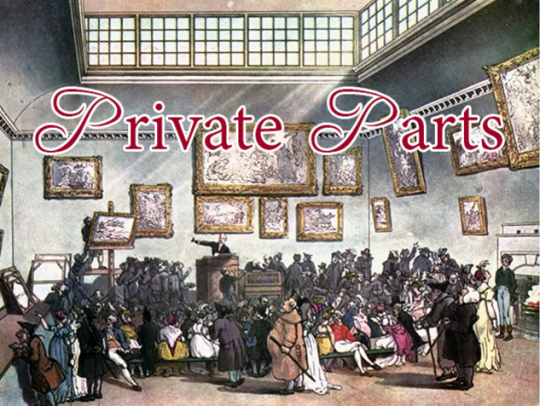
Private Parts is a series exposing the raw, gritty, and true stories behind artworks in private collections. Every week, you’ll find the untold tales of the back stabbings, thefts, and $100 million deals that move these works to secret lairs and impregnable vaults around the world. We’ll always be crazy in love with museums and galleries, but we also believe in giving the people what they want: All the art.
This week, behold Leonardo da Vinci’s Salvator Mundi.
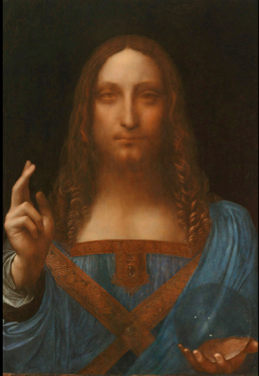
Christ doing the Miss Cleo thing.
It’s pretty likely you’ve never seen or heard of this painting. And that’s cool. No judgement here, friend. It’s certainly not the da Vinci painting people get tattooed across their parts. However, if you knew right off the bat that it was a lost da Vinci masterpiece, then you have a leg up on the consortium of art investors that bought it in 2005 at auction. They figured it would clean up real nice, but, otherwise, had no idea what in the hell they were getting into #shouldahiredanarthistorian.
That’s not to imply a treatment of this subject by da Vinci is in any way surprising. Far from it. In fact, da Vinci’s representation of Christ as savior of the world was both well known and widely revered. Everyone just thought it was destroyed long ago.
Preparatory drawings exist, as do some twenty remixes of the subject completed by da Vinci’s crew and later painters. Such was the impact of this work: Once a painter saw it, they usually made one of their own. There’s so many (low quality) imitations out there that It was basically a 16th century, OG meme.

The power to question is the basis of all human progress. - Indira Gandhi
Da Vinci may have painted it for France’s King Louis XII, but no one’s certain. England’s King Charles I is the first known owner, keeping it in his private collection until he was beheaded in the middle of the English Civil War. Then, his son, King Charles II owned it until the work passed to the Duke of Buckingham in the 18th century. From there, it was seemingly lost.
Then we come to the year of our Lord, 2005. An art investor with a few secret partners buys a painting for less than $10,000 at an estate sale auction. It’s pretty worse for wear. There’s a crack in the walnut base filled with stucco. Centuries of amateur restoration have made it look more fitting for peopleofwalmart.com than a proper museum or high-powered personal collection.

Protip: Never skimp on painting restoration.
But these art investors had a gut feeling this painting was something special. They took it to a restoration expert at NYU. In 2011, just seven years later, they had a rediscovered da Vinci masterpiece. One of only 15 oil paintings by the master’s hand in existence. The first such discovery in 100 years.
Confirmation of da Vinci’s authorship was a painstaking task. First, all the crappy overpaint had to be wiped off layer by layer. Then, the restorer shot lasers at it and looked at the painting with night vision goggles while comparing it to the preparatory sketches #truestory. And, finally, the restorer realized Christ’s hair had the same maybe it’s Maybelline curls as a verified da Vinci painting: a St. John the Baptist in the Louvre.
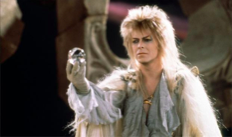
Salvator Bowie, Bowie as Savior of Goblin CIty.
As always, there’s an entrenched group of truthers out there that disbelieve all the fancy science, and the lasers, and the scholarly opinion about this painting. For instance, the investors who bought it in 2005 refuse to release color photos of the painting pre-restoration. Are they trying to safeguard the value of the refinished work, or is this a conspiracy?! Then there’s the fact that this painting is unique cut from da Vinci’s back catalogue. Christ’s made up like an Orthodox icon, much unlike any other known composition by the master.
Suffice it to say, haters gon’ hate. The painting has been verified, certified, and truthified a genuine da Vinci by nearly every expert anyone could think of asking. Martin Kemp, preeminent da Vinci scholar and Oxford professor, personally authenticated the work on the basis of a finger painting technique used on Christ’s forehead. Apparently, da Vinci went the Simba route when it came to finishing touches.
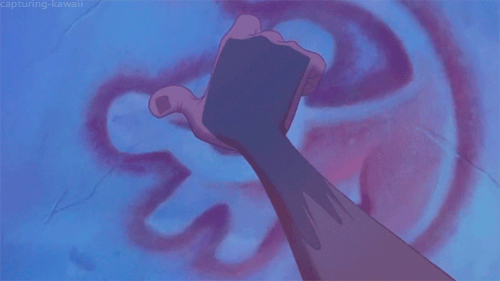
PICTURED: da Vinci finishing Salvator Mundi.
Once Salvator Mundi was decidedly a da Vinci, the folks who bought it were sipping on gin and juice, laid back, with their mind on their money and money on their mind. A $100 million bid rolled in almost immediately. The investors turned it down without a second thought. Put it on the market for $200 million, OBO.
It quickly went on view at London’s National Gallery alongside other totally da Vinci works. Salvator was a hit at the show. Then the Dallas Museum of Art got a hold of it. Dallas liked it. A lot. They wanted it forever. So they tried to buy it, but the investors said no. After that, things didn’t go according to plan for the investors.

Some Russian billionaire bought the thing. Which sounds great. I’d love that problem. Having something that a Russian billionaire wants to buy? Sign me up. But the final sale price was for only $80 million. And things only get schwifty from there, because that sales price depends on who you’re asking.
The Russian billionaire thought he paid $127.5 million for the da Vinci. So the $47.5 million question is why the discrepancy? Answer: Good old fashioned backstabbing and lying.
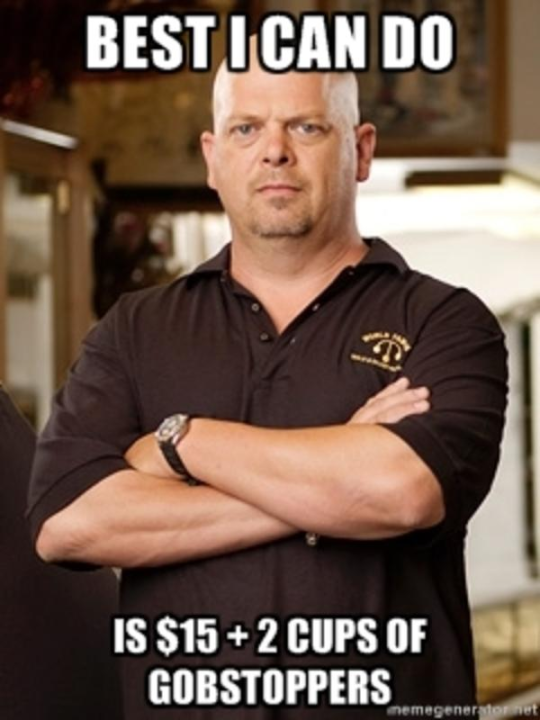
Dmitry Rybolovlev, the Russian billionaire, had been investing in art for years with the services of a Swiss guy named Yves Bouvier who simultaneously negotiated art deals for the severely loaded and stored those pieces in what’s called a freeport. When something’s bought for hundreds of millions of buckaroos and crosses international borders, governments want a cut. A freeport makes sure they can’t take one. They’re basically bunkers in countries with lax tax laws where priceless artworks, bottles of liquor, cars, really anything, can be traded from one billionaire to another without the tax man coming by for a piece.
So, Rybolovelev finds out he paid $127.5 million for Salvator Mundi and the guys selling it only got $80 million. It didn’t take long for him to realize Bouvier had been duping him for years. Bouvier was arrested by the police in Monaco (where Rybolovlev lives) and charged with fraud. It’s the biggest criminal case the micro-principality has ever known. And all over a painting from the 1500s that everyone thought was a fake just five years ago.
By: Clayton Schuster
EDITOR: Looks like Mundi just became the most expensive artwork ever sold at auction for a whopping $450,312,500.62 on November 15, 2017, despite art critic Jerry Saltz throwing the art world for a loop with his claim that this painting isn't even by Leonardo.
Sources
- http://www.theartwolf.com/articles/most-valuable-private-art.htm
- http://www.cnn.com/2011/11/04/living/discovering-leonardo-salvator-mund…
- http://www.nationalgallery.org.uk/whats-on/exhibitions/leonardo-da-vinc…
- https://www.nyu.edu/alumni.magazine/issue17/17_square_art.html
- http://artsbeat.blogs.nytimes.com/2014/03/03/newly-attributed-leonardo-…
- http://www.goldennumber.net/leonardo-da-vinci-salvator-mundi/
- http://www.artnews.com/2011/08/15/updated-a-long-lost-leonardo-2/
- http://www.telegraph.co.uk/culture/art/leonardo-da-vinci/8875031/Did-Le…
- http://www.theguardian.com/artanddesign/2011/jul/12/leonardo-portrait-o…
- http://www.dailymail.co.uk/news/article-2010309/Leonardo-Da-Vinci-Is-lo…
- http://www.ft.com/cms/s/0/3455808a-c71d-11e4-8e1f-00144feab7de.html
- http://www.nytimes.com/2014/03/10/arts/international/10iht-Putting-a-Pr…











